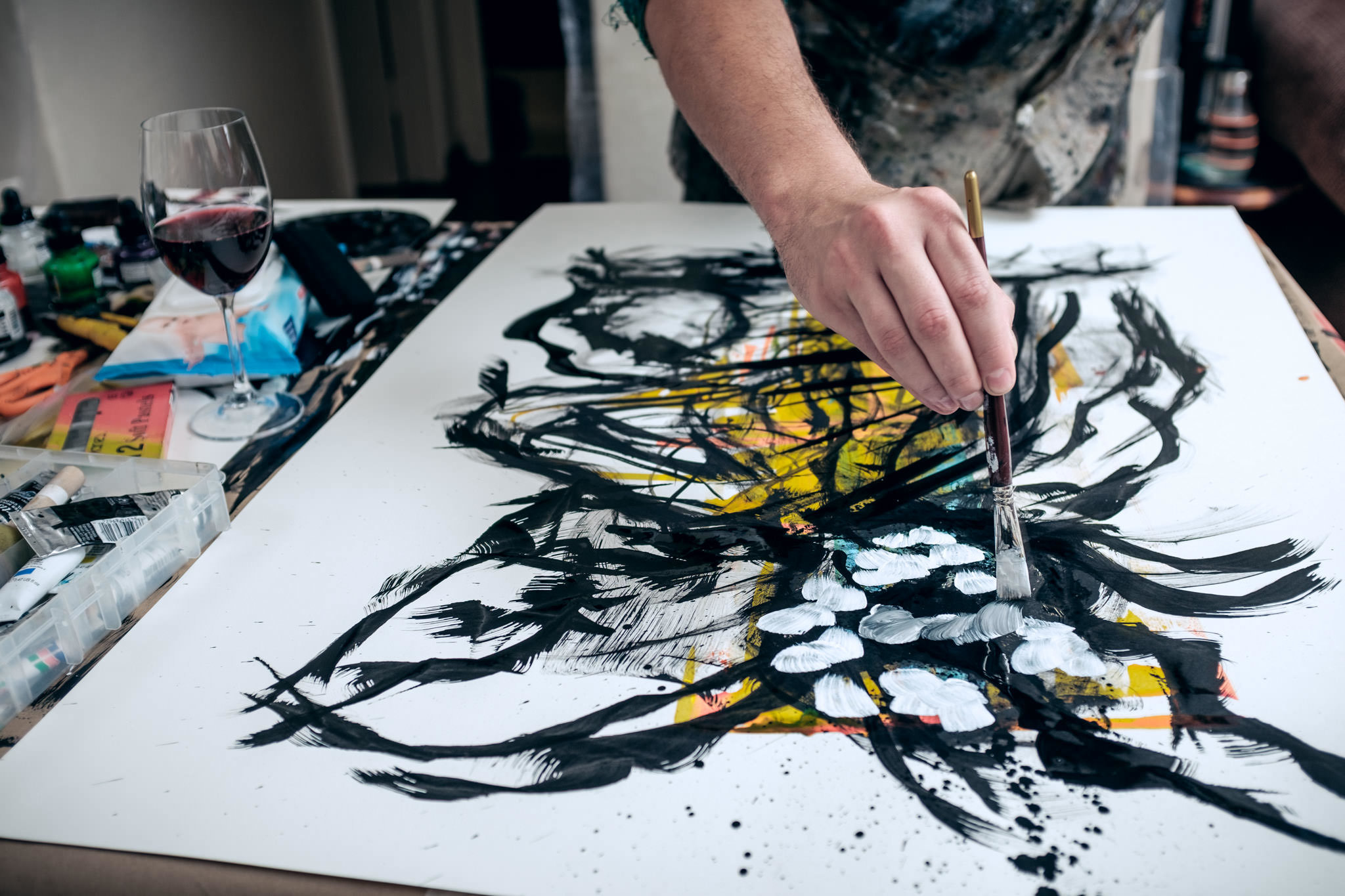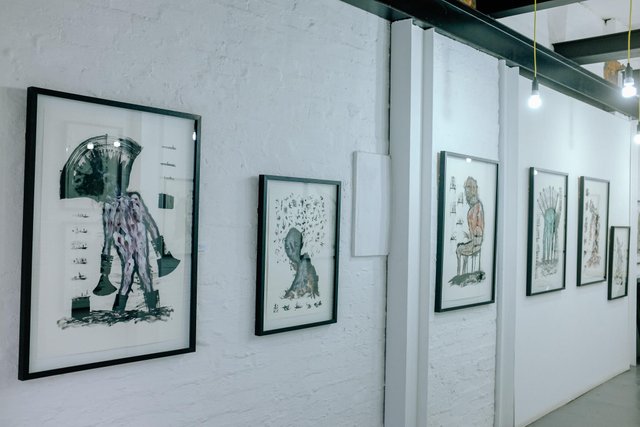Art and the Authentic Inner Vocabulary (Part 1)
What is it about the way an artist applies a brush that makes it instantly recognisable? Why are people drawn toward the work of certain artists? How do we know or recognise the work of a specific artist? Why do certain artworks just feel right when we see them or make them? These are the type of questions that you might have have heard as a first year student in that boring art history class you slept through in university. These are also the type of questions you may have heard in that pretentious discussion you had at that exhibition with the girl in the thrift-store clothing who seemed to be holding the wine glass in such a way that it may just tumble from her hand at any moment.
But these are also questions you should ask about your own art.
Greetings once again fellow steemians!
Today I want to make a departure from the endless stream of self-promotion and talk about a topic that I have found increasingly interesting as my time in the artistic practice has increased: the idea of the authentic inner vocabulary of the artist. Let it be noted upfront that what I am about to discuss has (possibly) no real scientific or philosophical basis. Also, I am probably not the first or the last person to talk about this subject. It really is more about my own observations and opinions regarding this specific aspect of artmaking and the practices associated with it. I will try and incorporate some more reliable sources (if I can think of any) than just my own special snowflake experience to demonstrate my points but many of the opinions I leverage here are just that - opinions. With that little disclaimer out of the way, let’s move on to the topic at hand!

What is it about the way an artist applies a brush that makes it instantly recognisable?
This first step would be to describe exactly what I mean when I refer to an authentic inner vocabulary. I would suggest that it is the collection of marks, signatures and expression patterns that an artist builds up over time that comes to define their body of work. It is the insignia that embodies their thinking about the world and their place in it. It is the visual and thematic language that develops and aligns itself so closely with the sense of artistic self and the thinking that drives that practice that it feels authentic to both the audience and the artist himself. This expression can manifest itself through graphic elements like line, shape, colour but also through theme and subject matter. In short, I believe deep within each artist lies a set of specific expressions and elements that truly reflects or at least closely resembles their ideological or philosophical perspective.
You only have to take one look at the vibrant symbology of Basquiat or the flowing mark-making of Van Gogh or the meat-filled, tortured portraits of Francis Bacon to realise that each of these artists have a unique and defined way of expressing themselves. In addition, there is a binding and almost intangible golden thread that can be recognised in their body of work. This is that thing that makes us say “ this is very Andy Warhol” or “it looks a bit like a Picasso” when we see artworks that somehow emulates the work of these great artists.

What connects all these pieces on the wall?
In my mind, the function of this inner vocabulary provides a dual function to the artist. Firstly, it provides a means for the artist to structure his own artistic pursuit into something resembling a mythology. It becomes a set of ideas and practices that the artist can use in his work to provide a sense of cohesion and meaning. In some ways, through the application of this inner vocabulary, the artworks provide their own context through which they can be interpreted. Essentially this means that by understanding the mythology of the artist, one can understand the artwork itself as the artwork is an expression of that mythology.
Secondly, it serves as a platform through which the audience can access and immerse themselves in the work and to understand what the artist is all about. (On a side note: it also allows art critics and historians to create elaborate and very long-winded explanations regarding why a particular artwork represents a critique of capitalism or feminism or the struggle with homosexuality within the context of the own artists’ life. This explanation can then be screened on the BBC for everyone to fall asleep to.) It can be very rewarding for art lovers to research and understand the expression of an artist as it may align with their own experiences of the world. This may one of the reasons why people fall in love with one artist and despise another.
It seems clear at this point that the artists’ inner vocabulary is a very useful tool indeed. One may even say that it is almost necessary for the recognition and success of any artistic pursuit. And you would probably be right! So here is the good news: a defined inner vocabulary can elevate artworks and make it recognisable and accessible to the audience. An authentic inner vocabulary may even be a way for the artist to access and ultimately understand their own work.
But here is the bad news: you have to discover it first. I will address this in the next post!
Endnotes: I started writing this as one piece but it ended up being a bit long so I am going to split it up. I hope you guys enjoyed reading this and found some value in the opinions I leveraged here. If you know of any sources that address the topics discussed here or if you simply enjoyed the content please leave a comment below! Until next time.
Photo Credit: Bernard Brand